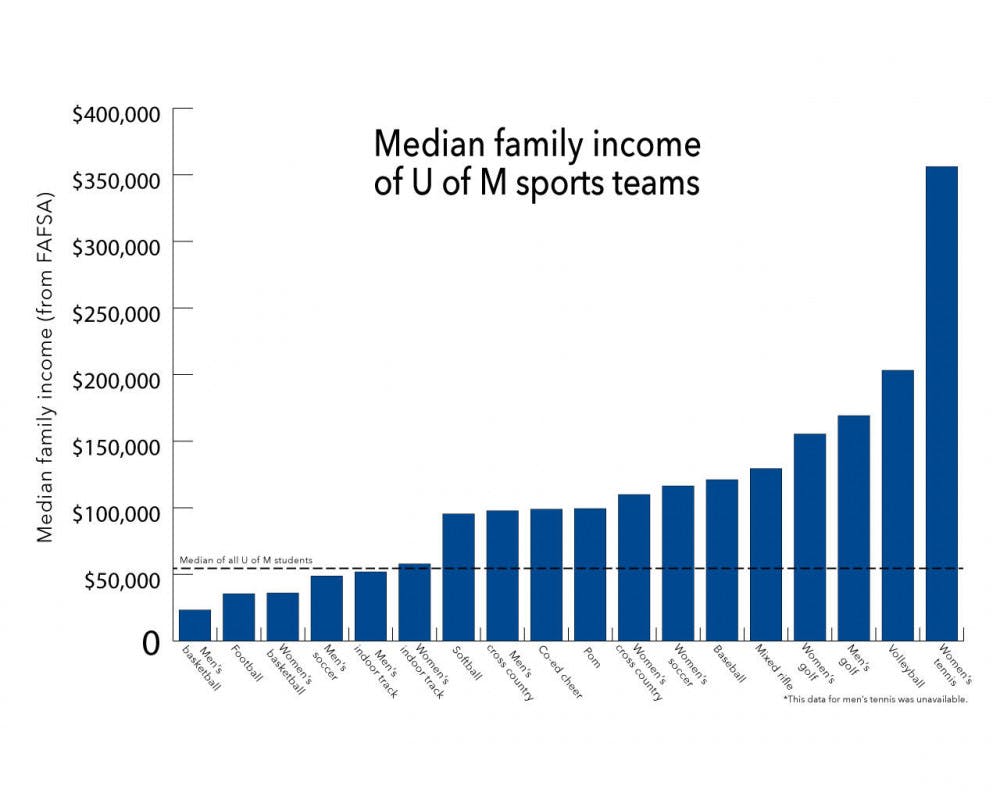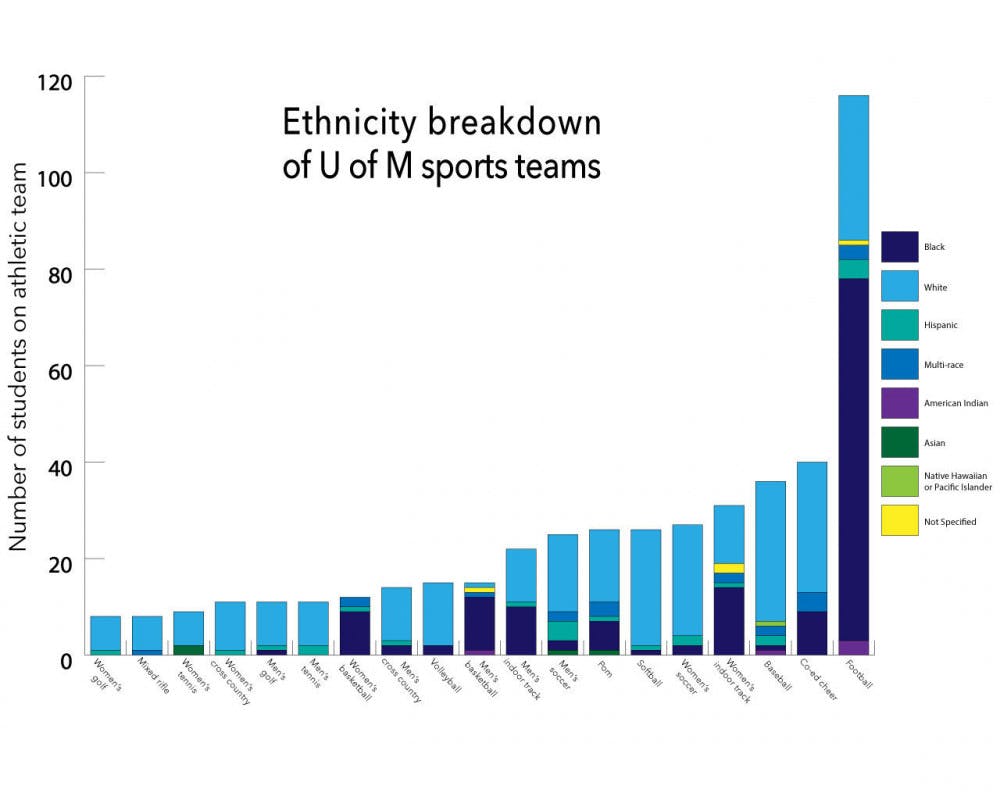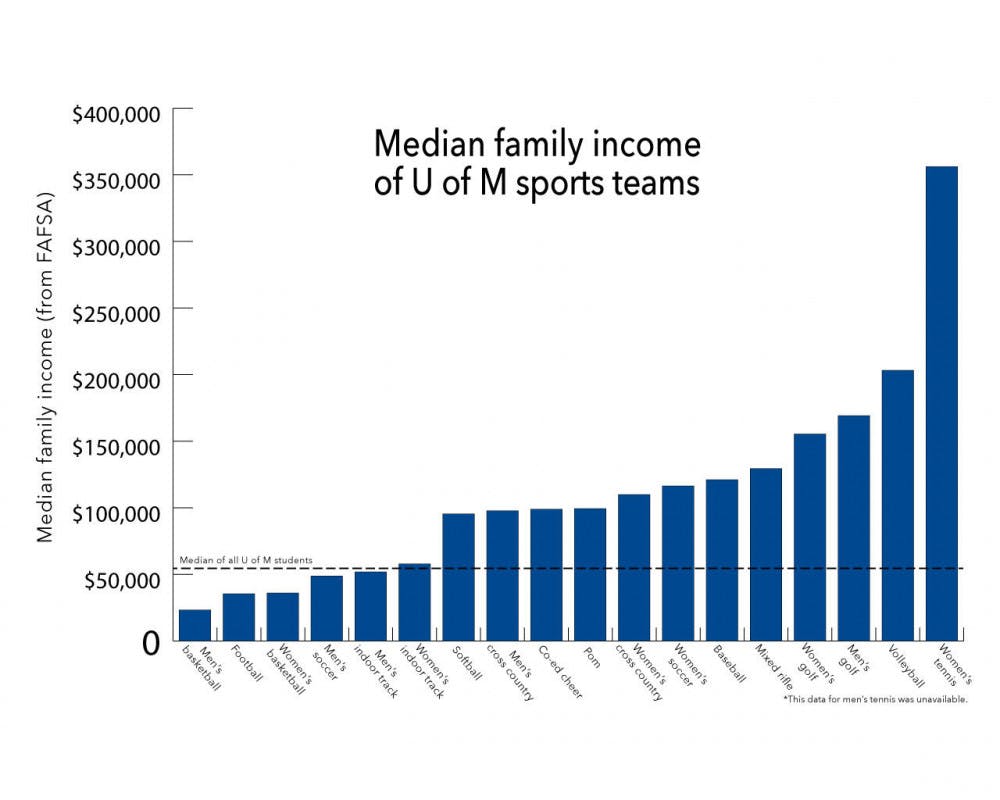Some people turn to sports as an escape from hot-button issues like racial inequality, but the irony is sports is extensive with its own issues, as made evident by events like NFL players’ protests.
Sports, like any other social institution, often serve as a mirror to society, a microcosm of what is happening in the greater whole.

A graph shows the median family income of athletes on different U of M sports teams. This data was unavailable for the men's tennis team. Data from the U of M Office of Institutional Research.
“We, as Americans, like to treat sports as a unique kind of place, this sacred place where individuals’ hard work and talent immediately pays off because it prizes this idea of American meritocracy and service, but sport is a social institution just like the education system, just like politics, just like religion or the family or the economy,†said Jeffrey Sacha, a sociology professor at American River College, a community college in California near Sacramento. “It’s a social institution that’s rife for exploitation, and the people who make money on the backs of others.â€
The University of Memphis sports team with the highest median family income, according to FAFSA data, is the women’s tennis team, which has seven white players and two Asian players, with $356,189.50. The top 5 percent of people in the United States earn incomes of $237,035 or more, according to data from the United States Census Bureau.

A graph shows the ethnicity breakdown of student-athletes on U of M sports teams. Data from the U of M Office of Institutional Research.
The U of M sports team with the lowest median family income, according to FAFSA data, is the men’s basketball team, which has one American Indian player, 11 black players, one multi-race player, one player whose race is not specified and one white player, with $23,316.
Sacha said three reasons are often used to describe why certain ethnicities of people play some sports over others. These include physical abilities, cultural reasons and structural obstacles. Of the three, Sacha said saying some people are more physically able to compete in certain sports is problematic.
“It has roots in racist white supremacist views of which bodies or which brains are superior to others,†Sacha said.
Sacha also said cultural reasons why people do things often overlook more severe issues, like structural ones. He said he believes structural issues, like access to opportunities, prohibit some people from playing certain sports. It is not because people have access to all options and just choose not to play certain sports.
“Through structural inequalities, like the ways we fund high school sports and youth sports and amateur sports in general, the disproportionate opportunities that middle-class Americans have to play whatever they want,†Sacha said.
It is a question of resources, and the real question that should be asked is why the opportunities are so segregated, Sacha said.
Tim Delaney, chair of the department of sociology at State University of New York at Oswego, said there is an idea that people from lower socioeconomic statuses are attracted to the money-generating sports, like football or basketball, to improve their family’s socioeconomic status.
On the converse, Delaney said sports with limited financial payoff like volleyball or lacrosse are attractive to people who think they can get ahead through traditional employment sectors.
Individual sports like golf and tennis have fewer monetary opportunities because of the limited spots available for an individual to succeed in such activities, Delaney said. These sports also cost the people playing more money to perform better. Some team sports like hockey also cost more because of the fees, equipment and travel involved.
“That families from lower socioeconomic statuses see sports as the best way to ‘climb the social ladder’ reflects racist realities of the social structure that seem to favor families of a society’s majority racial or ethnic categories,†Delaney said.




